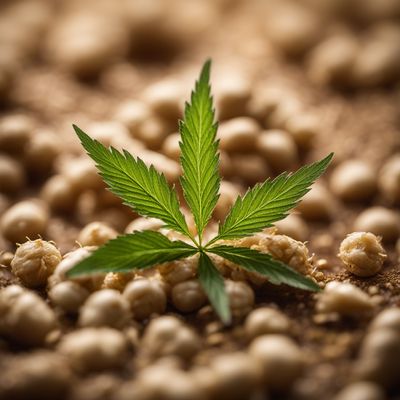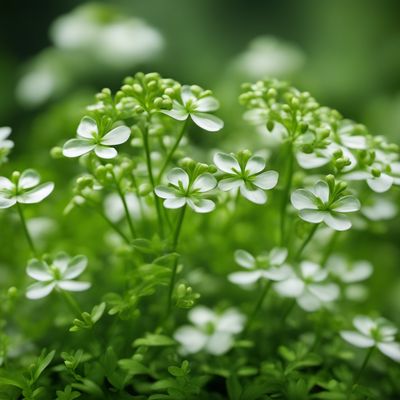
Ingredient
Bearberry infusion leaves
The Healing Power of Bearberry
Bearberry infusion leaves, also known as uva-ursi, have a slightly bitter taste with hints of sweetness and astringency. They are small, dark green leaves that are commonly used to make herbal teas or infusions. The leaves have a smooth texture and release a pleasant aroma when steeped in hot water.
Origins and history
Bearberry infusion leaves have a long history of use in traditional medicine, particularly among Native American tribes. They were used to treat urinary tract infections, digestive issues, and skin conditions. Native to North America, bearberry plants are found in various regions, including the Arctic, subarctic, and mountainous areas. They have cultural significance among indigenous communities and are often used in ceremonies and rituals.
Nutritional information
Bearberry infusion leaves are low in calories and rich in antioxidants, including phenolic compounds and flavonoids. They also contain tannins, which contribute to their astringent properties.
Allergens
There are no known allergens associated with bearberry infusion leaves.
How to select
When selecting bearberry infusion leaves, look for fresh, vibrant leaves that are free from discoloration or signs of wilting. Avoid leaves that appear yellow or brown, as they may be past their prime. Opt for organic or sustainably harvested leaves whenever possible to ensure the highest quality and minimize exposure to pesticides or other chemicals.
Storage recommendations
To maintain the freshness and quality of bearberry infusion leaves, store them in an airtight container in a cool, dark place. Avoid exposure to moisture or direct sunlight, as this can cause the leaves to lose their flavor and potency. Properly stored bearberry leaves can last for up to a year.
How to produce
Bearberry plants can be grown in well-drained soil with full sun or partial shade. They are hardy plants that can tolerate various climates, including cold temperatures. However, they require acidic soil conditions to thrive. Consider planting bearberry in containers or raised beds if your soil is not naturally acidic.
Preparation tips
To prepare bearberry infusion leaves, steep a handful of dried leaves in hot water for 5-10 minutes. Strain the liquid and enjoy as a soothing herbal tea. You can also use bearberry leaves to infuse flavor into syrups, vinegars, or alcoholic beverages. Additionally, bearberry leaves can be used as a natural dye for fabrics or as a decorative element in crafts.
Culinary uses
Bearberry infusion leaves are commonly used to make herbal teas, infusions, or tinctures. They can also be incorporated into various culinary creations, such as syrups, sauces, or desserts. In traditional medicine, bearberry leaves are believed to have diuretic, antimicrobial, and anti-inflammatory properties.
Availability
Bearberry infusion leaves are commonly available in North America, particularly in regions where the plant is native, such as Alaska, Canada, and parts of the United States. They can also be found in specialty health food stores or online retailers that offer herbal ingredients.
More ingredients from this category » Browse all

Catmint infusion leaves
The Soothing Herbal Elixir

Clary sage infusion leaves
The Aromatic Herb for Culinary and Medicinal Delights

Ladies mantle infusion leaves
The Herbal Elixir: Unveiling the Magic of Ladies Mantle Infusion Leaves

Wild strawberry infusion leaves
The Delicate Essence of Wild Strawberry Infusion Leaves

Hemp infusion leaves
The Healing Power of Hemp: Unveiling the Potential of Infusion Leaves

Ironwort infusion leaves
The Herbal Elixir: Unveiling the Wonders of Ironwort Infusion Leaves

Sweet trefoil infusion leaves
The Delicate Herbal Elixir

Hazelnut infusion leaves
Aromatic Hazelnut Elixir

Passion flower infusion leaves
"Nature's Tranquilizer: Unveiling the Secrets of Passion Flower Infusion Leaves"

Sweet woodruff infusion leaves
Fragrant Elixir: Exploring the Delights of Sweet Woodruff Infusion Leaves

Mulberry (black and white) infusion leaves
The Versatile Mulberry

Horse-chestnut infusion leaves
The Healing Power of Horse-Chestnut Infusion Leaves
